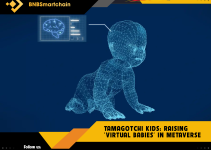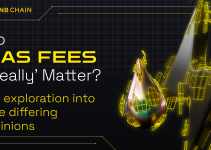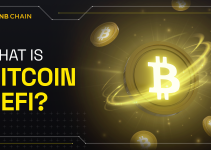Table of Contents
Intro
We collaborated with Animoca Brands’ research team on a study of network effects in Web3 games. We aim to present a more specific hypothesis for the network effects of Web3 products, inspecting the close relationship between product and token economics identified in our previous article as a starting point.
One problem that applies to Web3 products is the structural challenge that only allows for minimal network effects or the absence of networks. Moreover, it is especially noteworthy that DeFi and Web3 games have different rules for network effects and Tokenomics to assist them.
Evolution of Blockchain Games Away From Network Effects
Blockchain-based gaming (hereafter referred to as GameFi) has only been around for about five years, but various innovations have been made, including using NFTs, wager redistribution to create speculative demand, and the introduction of more sustainable mechanisms.
Axie Infinity and STEPN have achieved explosive growth thanks to their light-user-friendly UI/UX and financial incentives. However, concerned about the unsustainability of products supported by speculative demand, subsequent products have sought to eliminate speculation as much as possible to achieve a healthier token economy.
We won’t discuss the pros and cons of this change here, but the total elimination of its speculative nature has undermined one of the greatest strengths that GameFi had: its connection to the global network through the public chain. Speculation does not create network effects and isn’t sustainable, but it works on a global scale from the beginning. Furthermore, unlike DeFi, most existing games have no composability, and their interaction with others is through gameplay. As a result, GameFi could easily become a degraded version of Web2 games.
What would it take to create a product that allows the distribution of tokens for bootstrapping engagement without affecting user experience yet achieves CAC (Customer Acquisition Cost) < LTV (LifeTime Value) and grows autonomously once the threshold is exceeded? The answer is network effects.
What are Network Effects?

Network effect (Nfx) is a phenomenon in which the value of a product or service increases as more people use it. The more people use a product, the more valuable it becomes.
In discussing network effects, it is important to note that there are multiple kinds of network effects, such as physical, protocol, platform, performance, etc. Refer to this article for more information. Different network effects have different properties in terms of type, category, and phase.
For example, in the case of old telephones, which benefit from physical Nfx, where users can only call others who use the same network, there’s no use for two telephone networks if people can reach everyone he wants to connect with through one network, as increased usage of one telephone network leads to its direct increase in the value to its users. Due to reasons such as the utility being direct, people use it in their everyday lives, and it requires physical terminals and lines which leads to high switching costs. Competitors must provide the same or better utility at 10x or greater efficiency to replace it.
In the case of games, the enjoyment of each user increases as the number of users grows, as the time required to match decreases, more common topics for communication become available, and a pseudo-society is created within the digital space.
What Contributes to Nfx in Web2 Games?
The main factors that contribute to Nfx in traditional & Web2 gaming and tech sectors include ease of use, quality, brand recognition, critical mass, complementary goods, and switching costs:
- Ease of use and quality naturally attracts and retains more users as information about the product/ service gets spread out quicker through word of mouth.
- Brand recognition contributes to Nfx as users are likelier to use and talk about products/ services from brands they recognize and trust. Coca-Cola’s strong brand has contributed to its success as consumers naturally have a better perception and memory of their products which helped spread its products quicker.
- Critical mass – the number of users a network needs to reach a level of activity that makes it attractive to other potential users, leading to a positive feedback loop that can cause rapid growth and widespread adoption as more users join after critical mass is reached. For example, social media platforms like Facebook and Twitter are more valuable and fun to users when a sufficient number of their friends and family members already use the platform.
- Complementary goods – products or services used in conjunction with a particular network or platform, makes a network more attractive to join or stay, much like how software developers create applications designed to run on a specific operating system, adding more value to the system.
- Switching costs – financial or non-financial costs that users incur when switching from one network to another will make users less likely to switch to a competing network, helping lock in users to the network as they become more reluctant to abandon their tangible and intangible investment within a particular network.
How Web3 Games Should Leverage Nfx?
Since Web3 games usually have limited budgets and less polished UIUX, they have to take full advantage of what can only be done with public blockchains to attract users. Consequently, the business models of Web2 games and Web3 games differ despite being in the same category.
To dig deeper into this direction, let us consider app/sector-specific rollup for games that support an on-chain game with a discrete mechanism (all digital games are technically discrete, but here let’s focus on “practically discrete” games such as card games and board games rather than shooter games and real-time strategy games).
Fully on-chain games store all game logic on-chain. The reason for handling game logic on-chain is not only because it increases information transparency and platform fairness but also because storing core components on-chain makes that logic composable and interoperable. We focus here on games with discrete mechanisms because the number of on-chain transactions required to represent the behavior in a game is finite and controllable. Also, thanks to zk technology, we can now support games like poker, which have to be able to conceal some information.

This roll-up has built-in features to assist game creators, including random number generation, information concealment, ratings based on user performance, and visibility of on-chain activity. Once a game has acquired a minimum number of users to have a network effect in one region, it can increase the number of users by expanding to other regions. Note that in the case of synchronous games, only users in the same time zone contribute to the network effect, but there is no geographic restriction for game producers who gain greater utility from the increased number of users.
Game producers, live streamers, and tournament organizers receive the roll-up native tokens according to their performance. They should be incentivized for actions that contribute to network effects, not simply for playing the game.
The Importance of Incorporating Multiple Nfx into Products
The main reason Web3 projects, especially non-DeFi applications, fail to either scale or sustain themselves, or both, lies in the product side. Many people discuss sustainable tokenomics, but what truly matters is the product. Web3 games can do most of what Web2 games do. However, due to overwhelming budget differences, UIUX limitations, and the ill-conceived integration of tokens, they are wholly “nerfed.”
* nerf = made less powerful (usually to balance out a game)

Many Web3 games have no network effects or only those indicated by the green line in the graph above. The green line indicates a convergent network effect. This network effect initially produces a significant increase in utility but quickly converges to a certain value. For example, increasing the number of users in a region reduces the time required for a match. A reduction from 10 seconds to 1 second is significant, but 1 second to 0.1 seconds will not lead to a large increase in utility. The upper limit of utility caps the value of the product.
On the other hand, the blue line represents the network effect formed by geographically extensible products, token standards, and transaction formats necessary to create a comprehensive ecosystem encompassing multiple games, tools for building on-chain game logic, and entirely new types of wallets that provide seamless UX. These will not lead to explosive growth in the short term, but they will work in a compounding manner.

Incorporating multiple network effects into a single product can achieve initial bootstrapping and long-term growth. For example, the operator of a sector-specific rollup for the above game would initially have to create their own game and organize the tournament. However, as the number of users grows, a community will form, and not only will there be less waiting time for games, but more users will also be willing to replace the operator to create games and organize tournaments.
Examples of Nfx in Web3 Games
$MAGIC Working Magic on the TreasureDAO Ecosystem
Previous iterations of Web3 games have found it difficult to leverage Nfx through their platforms, with popular games such as Axie Infinity and STEPN having limited exposure to Nfx. However, things are beginning to change as crypto gaming platforms are transitioning to create multiple gateways and targeting several player bases under a single token.
TreasureDAO is a good example with their $MAGIC token, which allows users to participate in decentralized ecosystems on Arbitrum within several metaverse projects. Different projects on the platform utilize and are economically linked to $MAGIC, each game acts as a complementary good that adds value to the TreasureDAO ecosystem, and Nfx can start to be seen.
TreasureDAO uses a bottom-up approach to metaverse creation, with free in-game assets being given out to users to help build upon its community. This attracts more gamers, eventually leading to sufficient players required to reach critical mass. The developers greatly emphasize cultural development while simultaneously building out games.
Artists and developers are able to leverage the community while players can enjoy the enhanced gaming experience. $MAGIC’s design also bridges players of different games into the same community as players can exchange assets between different games through the use of $MAGIC, and this interoperability also acts as a strong Nfx. Furthermore, an enhanced metaverse experience brings more users, more developers, better experience, etc., and this cycle helps to grow the entire ecosystem.
$MAGIC ecosystem protocols include Bridgeworld, Smolverse, Tales of Elleria, The Beacon, Battlefly, The lost donkey, Toadstool, Knights of the Ether, LifeVerse, Lost Samurise, and Realm.

As the above graph shows, the TreasureDAO ecosystem shows excellent potential for a “one token multiple games structures,” but the inflow of DAUs from new games is just enough to compensate for the decline in users from older games, and autonomous growth is not ensured, meaning that the ecosystem is not yet fully self-sustaining.
Animoca Brands actively aims to capitalize on its own network effects, as numerous projects within its portfolio are interconnected via shared liquidity pools and cross-project token rewards. Mocaverse, the inaugural NFT collection endorsed by Animoca Brands, exemplifies this synergy, as its value is bolstered through the integration of multiple communities from other projects and subsidiaries within Animoca’s ecosystem.
In addition to the above examples, network effects can be seen in EVM economic zones and tools for EVM chains, such as languages, development toolkits, node services, token standards, token issuance, and tools. The creation of new EVM chains will create a loosely connected interoperable ecosystem, which will have positive effects such as the multi-chain deployment of products, utilization of infrastructure in other chains, and an increase in potential customers for developers across chains.
The EVM-compatible Layer 1 chain is horizontal expansion, while the roll-up-based EVM-compatible Layer 2 is vertical. Although the economics at the protocol level is different, both should be considered equally effective for application layers such as gaming. Furthermore, since each chain and each roll-up has a strong presence in a particular region and different user ideologies, the same strategy that allowed Uber to expand its atomic network of the same services to other regions can be used to strengthen the network effect.
Ideas for Future Tokenomics
Phase-Specific or Purpose-Specific Token Incentives
The surge of DeFi and GameFi products entering the market necessitates that management teams identify opportunities to establish a user base in order to reap the rewards of incremental network effects. One common approach involves employing phase-specific token incentives to engage an initial group of users.
It is crucial to strike an optimal balance in these incentives to sufficiently motivate early adopters until the product matures to a stage where it can attract a broader audience. During this period, token incentives should be carefully managed to avoid creating issues related to unsustainable economic models.
Many will not agree, but some categories of products do not require excessive decentralization, and token design should not be immutable. For example, a fixed token emission schedule means the management team cannot change its policies in response to a changing environment, as opposed to some emerging DeFi products, where the management team attracts users by allocating a fixed budget as token incentives in the initial phases, requiring payment of fees or item acquisition as a condition for earning tokens, then transferring the proceeds to the treasury.
A more extensive array of utilities is available for gaming platforms compared to DeFi, necessitating an adjustment in token incentives in line with the platform’s growth. Initially, gameplay and community collaboration can be incentivized through liquid token rewards. As the platform expands, it becomes vital to regulate these rewards to maintain a stable ecosystem.
By seeking alternative strategies in subsequent phases of a game’s lifecycle, managers can encourage tournament involvement, innovative game creation, and spirited leaderboard competition with differing sizes of token rewards or without exclusively relying on token-based incentives altogether.
Roadmap from Small Network Effects to Large Scale
As noted, it requires a strategy to take advantage of more small-scale network effects. For example, once Uber has a certain number of drivers in a city, the utility gains of getting more drivers are minimal. Many games have a similar structure, so it is necessary to understand how first to expand the network to achieve small network effects and how several small network effects can help create larger-scale network effects for a sustainable future of a project.
We already see this happening with patterns of horizontal expansion through multiple small networks(Uber, Tinder) and patterns of deepening a single large network (Telephone, ID).
These trends are also evident in the GameFi sector, where similar incremental network effects are first propelled by token incentives tailored to individual games, as Axie Infinity and STEPN might have tried to do. In contrast, as demonstrated by TreasureDAO, platform-wide applications utilize smaller networks of individual games within their platform to facilitate the scaling of platform-wide token ($MAGIC) ecosystems.
An alternative approach to catalyzing initial network effects, distinct from the crypto industry, lies within its communities. As companies devise strategies to augment their primary player base for games via token incentives, a blueprint emerges where GameFi enterprises can escalate from modest network effects to a grand scale by capitalizing on pre-existing communities. This presents a novel pathway for GameFi companies to jumpstart the accumulation of network effect advantages and ultimately expand their products.
A prime illustration of this is the forthcoming Legends of Mara game developed by Yuga Labs, utilizing the Otherside NFT collection. Previously, Yuga Labs has garnered substantial community support through their Bored Ape Yacht Club and subsequent collections, and their ability to harness this backing can propel Legends of Mara to initially establish a user base and ultimately broaden its reach through network effects.
As a result, to create a successful product, we must contemplate what scale of network effects to acquire. To grow products in this step-by-step manner, governance and token issuance must be flexible and distance themselves from the old regime of immutable token designs.
Conclusion
The tremendous potential of Web3 games is undeniable. Yet, it is crucial for managers to optimally leverage network effects for efficient growth without overlooking the significance of sustainable tokenomics for long-term success.
The success stories of existing projects from Web2 and how they have adeptly used network effects to scale their operations provide valuable lessons. GameFi continues evolving, so it is poised to deliver substantial utility to users if executed properly.
Therefore, it is crucial for product owners to design games that are underpinned by robust communities and appropriate incentives, thereby achieving superior scaling via network effects.


